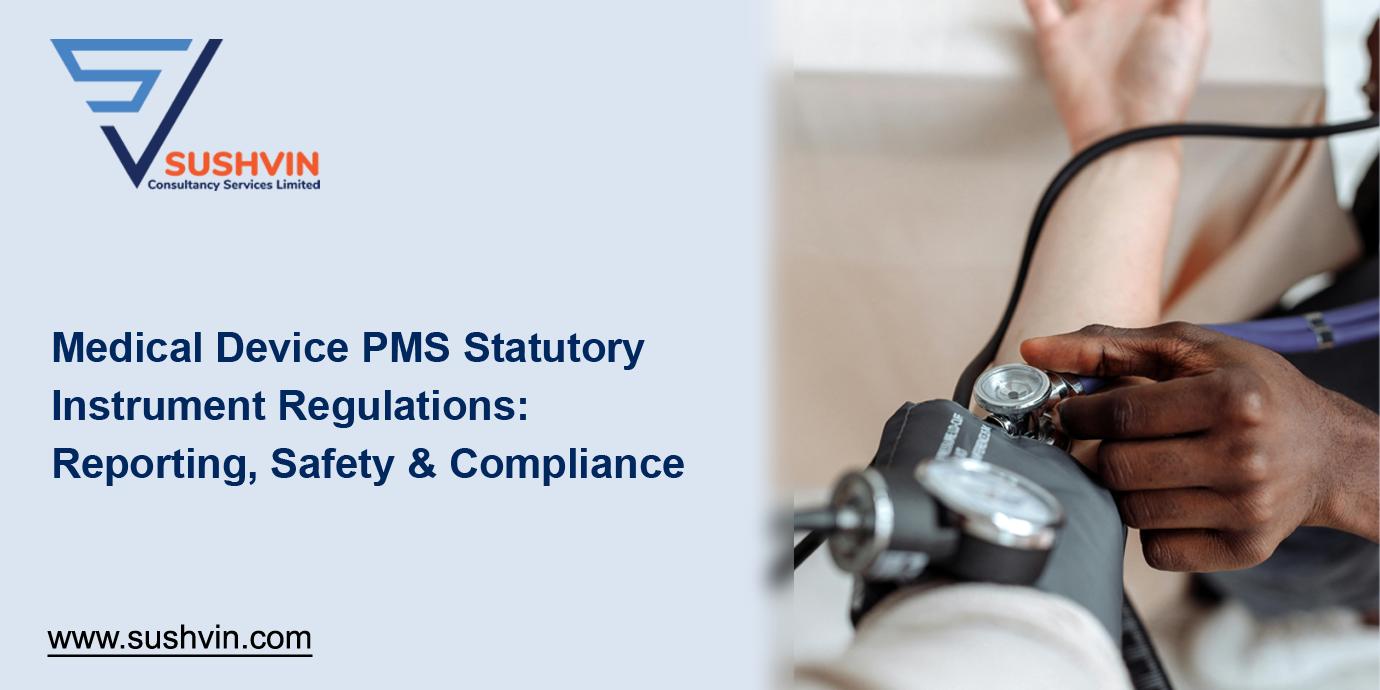
The UK's post-market surveillance (PMS) system is essential for maintaining the safety and performance of medical devices and in vitro diagnostic devices (IVDs) once they are placed on the market. In the UK, the regulatory framework for PMS is robust, with specific requirements for reporting incidents, submitting reports, and conducting field safety actions. This article provides an overview of the key regulations governing reporting within the UK's PMS system.
Exemptions from Full UK PMS Requirements
Reporting and Investigation of Serious Incidents
Manufacturers are required to report serious incidents, Field Safety Corrective Actions (FSCAs), and adverse trends. Reporting templates are available in the MORE portal. All serious incidents must be reported to the MHRA, regardless of how they were identified, including those received as Industry Notifications of a Public Report (INPRs).
Criteria for Serious Incidents
To qualify as a serious incident, three criteria must be met:
An incident becomes serious and reportable when the second and third criteria are satisfied, particularly in cases of public health threats needing urgent action.
Submission Obligations for Manufacturers:
The MHRA provides examples of reportable incidents and encourages checking device-specific vigilance guidance (DSVG) documents for relevant reporting advice.
Use Errors
Manufacturers are obligated to report incidents resulting from use errors that satisfy the criteria in section c, “What Must Be Reported to the MHRA (44ZC),” regardless of whether serious health deterioration occurred. Reports should consider whether design improvements, enhanced usability, or clearer instructions could minimize the risk of recurrence. Trend reporting may be necessary if a significant increase in errors is noted, and FSCA may be considered to mitigate these risks.
Post-Market Surveillance Report (PMSR)
Periodic Safety Update Report (PSUR)
PSUR Intervals
Class IIa
The manufacturer must produce the first PSUR within 2 years of the device being placed on the market/put into service or if already on the market within 2 years of this regulation coming into force. Update the PSUR every 2 years throughout the PMS period.
Class IIb and Class III medical devices and Class C and D, and Annex II (list A and B) IVDs
The manufacturer must produce the first PSUR within 1 year of the device being placed on the market/put into service or if already on the market within 1 year of this regulation coming into force. Update the PSUR every year throughout the PMS period
PSUR Content
Field Safety Corrective Actions
Manufacturers are required to inform MHRA of any Field Safety Corrective Actions (FSCAs) before they communicate these actions to healthcare providers and patients. Notification must be done through the MORE system, and manufacturers are also responsible for publishing Field Safety Notices on their websites ( Regulation 44ZJ) .This process ensures regulatory oversight and transparency with respect to device safety issues. The requirements are mostly the same as for the EU.
Trend Reporting
Report to the MHRA (44ZC)
Manufacturers must report serious incidents, FSCAs, and adverse trends. They are required to submit trend reports for both serious incidents that meet established norms and non-serious incidents that do not meet individual reporting criteria. Report must be submitted through the MORE portal and reviewed within the PMSR and PSUR. (Regulation 44ZN)
This ensures that all relevant safety data is accounted for, allowing for better risk management and compliance with regulatory standards. Under EU incidents and FSCAs must be reported through the centralized Eudamed database. (Article 87 Reporting of serious incidents and field safety corrective actions)
Reporting to Eudamed's electronic system
Manufacturers shall report, by means of the electronic system referred to in Article 92, any statistically significant increase in the frequency or severity of incidents that are not serious incidents or that are expected undesirable side- effects that could have a significant impact on the benefit-risk analysis referred to in Sections 1 and 5 of Annex I and which have led or may lead to risks to the health or safety of patients, users or other persons that are unacceptable when weighed against the intended benefits.
Conclusion Navigating the UK’s Post-Market Surveillance (PMS) system requires thorough understanding and adherence to reporting requirements. Compliance with PMSRs, PSURs, FSCAs, and trend reporting ensures that medical devices remain safe and effective throughout their lifecycle. By staying up to date with evolving UK regulations, manufacturers can mitigate risks, protect patients, and maintain compliance.
FAQs
Q: What is the PMS period for medical devices in the UK?
A: The PMS period is the period when the manufacturer is obliged to undertake their PMS activities for a particular device, from the sooner of the date it is first put into service or placed on the market in Great Britain until the end of the lifetime of the last device.
Q: How often must the PSUR be updated for Class IIa medical devices in the UK?
A: The PSUR must be updated every two years throughout the PMS period for Class IIa medical devices in the UK.
Q: What must be included in the final report for serious incidents in the UK?
A: The final report for serious incidents in the UK must be submitted to the MHRA via the MORE portal and include all the required information as specified in UK law.
Q: Who is responsible for reporting serious incidents, FSCAs, and adverse trends to the MHRA in the UK?
A: Manufacturers are responsible for reporting serious incidents, FSCAs, and adverse trends to the MHRA in the UK.
Q: Where can I find the full text of the new legislation?
A: The full text of "The Medical Devices (Post-market Surveillance Requirements) (Amendment) (Great Britain) Regulations 2024" can be found on the UK Parliament website.
If you have any questions, contact us for expert support.
